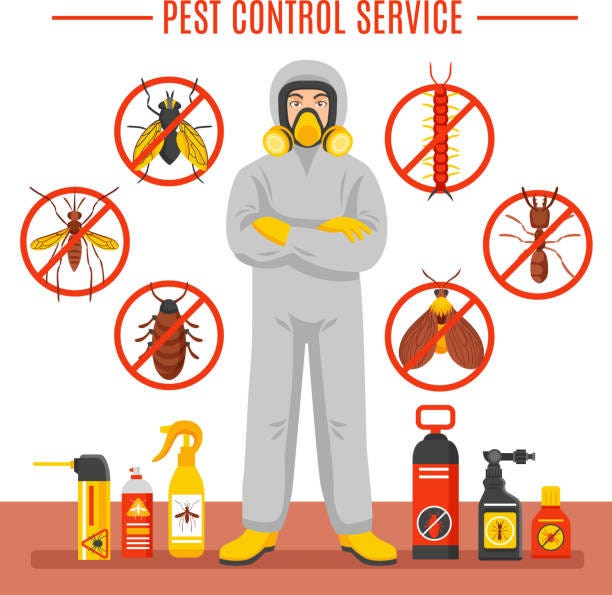Reliable A1 Bed Bug Treatment in Charlotte - Safe and Proven Approaches
Reliable A1 Bed Bug Treatment in Charlotte - Safe and Proven Approaches
Blog Article
Bed Insect Treatment Breakdown: Contrasting Chemical Vs. Non-Chemical Solutions
In the world of bug control, especially when dealing with the relentless concern of bed insects, the choice between chemical and non-chemical therapy services can be a pivotal one. Both techniques use unique advantages and downsides, affecting elements such as efficiency, safety factors to consider, and overall cost. By checking out the nuanced information of each method, a clearer understanding of which course to go after in resolving a bed insect problem can be achieved.
Effectiveness of Chemical Treatments
Chemical therapies for bed bug problems have actually been widely recognized for their fast and powerful effectiveness in removing these bugs. When taking into consideration the efficiency of chemical treatments, it is critical to understand that they can offer a detailed and fast solution to a bed bug problem. Expert pest control experts often rely upon insecticides to target bed insects at different stages of their life cycle, including grownups, eggs, and fairies. These chemicals usually function by interfering with the bed bugs' nerve system, leading to paralysis and eventual fatality.
Additionally, chemical therapies have the benefit of providing residual impacts, suggesting that they can remain to remove bed pests even after the initial application. This recurring activity is especially beneficial in combating any potential re-infestations. Furthermore, the fast action of chemical therapies can bring relief to people facing extreme bed bug problems, enabling them to regain control of their space rapidly.
Safety And Security Worry About Chemical Solutions
One essential aspect that requires mindful consideration when using chemical options for bed bug therapy is making certain the security of occupants and the setting. Exposure to certain chemicals used in bed pest therapies can lead to breathing issues, skin irritation, or various other adverse reactions, particularly in individuals with pre-existing conditions or level of sensitivities.
Additionally, the ecological effect of chemical solutions is one more considerable factor to consider. Some chemicals utilized in bed insect therapies may be harmful to valuable insects, wildlife, and environments if they leach right into the soil or water supply. It is important to utilize chemical treatments deliberately, complying with safety guidelines, and taking into consideration less toxic choices to minimize these dangers and ensure the efficient and secure management of bed pest infestations.
Benefits of Non-Chemical Methods
Considering the prospective security worries and environmental effect linked with chemical remedies for bed pest treatment, checking out non-chemical approaches provides a promising choice with a number of unique benefits. Non-chemical therapies are ecologically pleasant, as they do not contribute to air or water this post air pollution, making them a sustainable choice for parasite control.
Furthermore, non-chemical services can be effective in targeting bed pests, including hard-to-reach locations where chemical treatments may not pass through - A1 pest control charlotte nc bed bugs. Techniques such as heat treatment, vacuuming, heavy steam cleansing, and mattress coverings offer comprehensive elimination without the use of unsafe chemicals.
Limitations of Non-Chemical Treatments

Additionally, non-chemical therapies typically call for multiple applications to achieve pop over to this site successful obliteration. This can be lengthy and may not always ensure total elimination of all bed pests and their eggs, especially in concealed or hard-to-reach places.
Additionally, the success of non-chemical treatments greatly depends on appropriate implementation and thoroughness, which can be testing for individuals without professional knowledge. Inadequate application of non-chemical techniques may result in insufficient elimination, leading to relentless infestations and the requirement for extra therapies.
As a result, while non-chemical treatments have their benefits, it is essential to recognize these limitations and consider them when identifying one of the most reliable strategy for taking care of bed bug problems.
Price Comparison: Chemical Vs. Non-Chemical Options
Offered the limitations associated with non-chemical therapies, a crucial facet to assess in the context of bed bug management is the cost comparison between chemical and non-chemical options. In contrast, non-chemical therapies like warmth therapy or heavy steam can be much more pricey, with prices ranging from $1,000 to $6,000 for a whole home. While the first cost of chemical treatments might appear reduced, multiple treatments might be needed to completely remove the problem, possibly enhancing the total expense.
Conclusion

Taking into consideration the possible safety and security problems and environmental impact associated with chemical remedies for bed insect therapy, checking out non-chemical techniques offers an appealing alternative with numerous distinct benefits.Provided the restrictions linked with non-chemical therapies, a necessary element to evaluate in the context of bed bug management is the cost contrast between chemical and non-chemical options. In contrast, non-chemical treatments like heat therapy or vapor can be extra costly, with costs ranging from $1,000 to $6,000 for a whole home. While the initial cost of chemical treatments may seem reduced, numerous treatments might be called for he said to completely eradicate the problem, possibly boosting the overall cost.In verdict, when contrasting chemical and non-chemical bed insect treatment alternatives, it is important to think about effectiveness, security, advantages, constraints, and expense.
Report this page